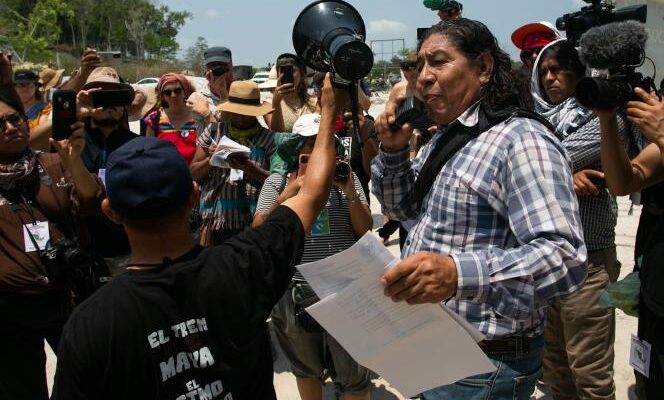A hundred activists from the El Sur resiste (“the South resists”) caravan settle, Saturday, May 6, in the Indigenous Center for Integral Formation, a stronghold of the Zapatistas on the outskirts of San Cristobal de las Casas (State of Chiapas). A colorful crowd mixes young European activists, Mexicans and natives, where you can see as many straw hats and caps as the traditional red Zapatista scarves covering the lower part of the face.
At the entrance, a huge banner announces the content of the event: « Stop the repression against the Zapatista Army of National Liberation [EZLN] “. This indigenous movement, which rose up in arms in January 1994, has been organizing autonomy for three decades – unrecognized by the Mexican state – in this southern region of the country. Still very present on the Mexican political scene – the Zapatistas had supported a Nahua candidate in the 2018 presidential election, “Marichuy” – they have expanded the territory they control in the mountains of Chiapas and continue to be the target attacks by paramilitary groups linked to large landowners and organized crime.
Between April 25 and May 7, the El Sur resiste caravan traveled through seven states in southeastern Mexico, with the aim of mapping the opposition of local communities to two “megaprojects” of President Andrés Manuel Lopez Obrador (aka ” AMLO”, center left): the Mayan Train first, which will travel the Yucatan Peninsula over 1,500 kilometers, and must transport in the long term, in addition to tourists, energy products (gas, oil, minerals) from Guatemala to the United States. Next, the interoceanic corridor, a 300 kilometer long railroad for the freight of goods, linking the Pacific and Atlantic oceans on the isthmus of Tehuantepec. Along the tracks of this corridor, which could eventually replace the Panama Canal, roads and industrial parks are planned.
“Destruction of the social fabric”
In San Cristobal de las Casas, between the walls lined with the slogans of the Indigenous Center for Integral Education, nearly 800 people gathered at the call of the National Indigenous Council, a body created in 1996 on the initiative of the EZLN and which today represents forty-four indigenous peoples. The time was first to take stock of the caravan, very bitter for the activists, who suffered, on April 28, the baton blows of the police who came to dislodge the “Terre et liberté” camp of the mixed natives, which prevented the progress of work on the interoceanic corridor over the past two months.
You have 68.09% of this article left to read. The following is for subscribers only.
